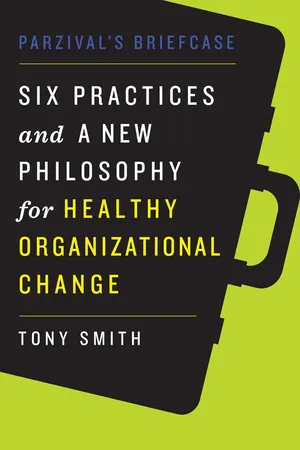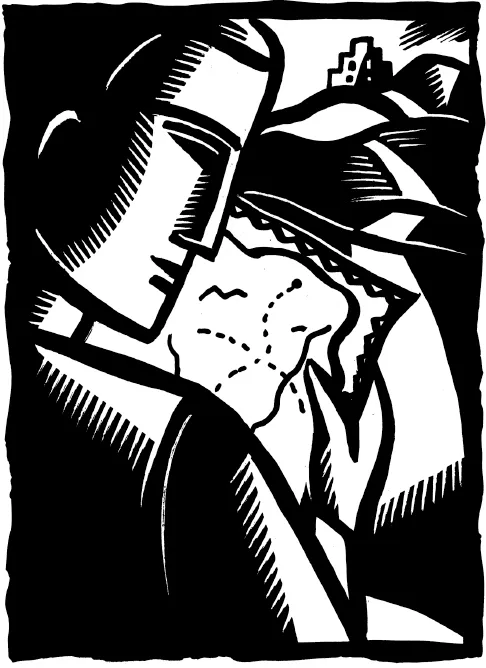![]()
I
The Philosopher’s Road Map
![]()
1
Understanding Change
Change is the fact of life. Although we often think nostalgically of the past as a pleasant, slow-moving affair where people lived in hospitable communities that cherished family values and simple truths, that is not the way our ancestors usually saw things. Pick up almost any history book that reports their actual words and you will see something familiar: people as stunned by the way life turns out as we are.
They talk about how things have never been so bad and they cannot keep up with the changes. They describe military invasions, economic dislocation, disease, and natural disasters that changed their lives beyond recognition. They did not know what to do about these troubles any more than we do.
Some who observed these phenomena were more sanguine about it, however. For thousands of years, philosophers have said that significant change is the rule not the exception in human life. Aristotle, for example, said that the core of human life, the first cause of everything, is dynamus, or “becoming.” These observers make it clear that like it or not, understand it or not, we and everything we love in this world are in constant transition, in the act of becoming. When we acknowledge a change in our circumstances and move to meet it, we are realigning ourselves with the rhythms of the changing world.
Sometimes this process scarcely seems like change at all. It may appear to be an orderly and dignified road through the life cycle, a progressive movement from conception to birth, from youth to maturity, and then to old age. Change can mean evolution. It can be a welcome gift, bringing release and replenishment. But it can also be sudden and violent. This is the form we tend to know it by when we are caught in the midst of transition.
However we experience it, change inevitably comes to us whether we want it to or not. If we wait long enough, it will alter everything in our world. The only real question about change is whether we participate actively in it. This becomes particularly clear when small changes periodically accumulate, and larger shifts need to occur if people and organizations are going to shake loose from antiquated ways in order to meet the needs of the day. In this situation responding to change is not simply a matter of finding methods for doing things better. These changes require fundamental alterations in the way relations are structured, the way we distribute resources, and in our beliefs about what is right and true. When accumulated rumblings and shifts gather force this way, an earthquake makes its way to the surface. We are experiencing the big one right now.
We live in a time of transition, one of those prime moments in history when a whole new economic, political, and cultural world is emerging. We are in the midst of a paradigm shift where the way in which we identify our values, laws, and relationships is changing dramatically. Confusion and conflict proliferate during these periods, and there are no widely acknowledged rules of the game to provide stability, confidence, and understanding.
In the United States, the old way of doing business is disintegrating and nearly every company is engaged in making significant changes. The factors that fuel this phenomenon include a technological revolution, powerful new international competition for markets and resources, new employee attitudes, and new consumer needs. Fortune magazine has written that we are in the midst of a transition as great as the one that followed the invention of the steam engine and electricity. The editor of Harvard Business Review has said that leading and managing have changed so drastically that managers are literally reinventing their profession on the job every day. No company is too small or too isolated to be unaffected by this state of affairs.
Major social institutions are also in trouble, unable to deliver the services expected of them, wondering where their next dollar will come from, uncertain about their responsibilities and span of influence. The problems they face and the solutions that are at hand for them are inextricably linked to those of business.
During times such as this, organizations and institutions must do more than tinker and adjust. They must transform themselves by developing new understandings of their contribution and locating new resources and networks of support. They must form effective relationships with an emerging and still to be defined environment.
Most of the organizations that prosper in this evolving landscape will be cohesive, inventive, and able to change quickly when the marketplace or the competition does. They will develop products and services that are genuinely needed and will deliver what they promise. They will be guided by leaders who know how to compel belief and are able to get the best out of their colleagues, who can create more powerful responses with fewer resources. Achieving this mix of qualities is not easy. But it must be done or the inventing and delivering of the new products, services, and values that are necessary now simply will not happen.
When People Skills Are Not Enough
What usually happens in the early stages of a transitional era, however, is not deep organizational change at all. Instead, leaders tend to look at the first symptoms that appear and try to make them go away. Then problems fester, people suffer, productivity and work standards decline. Trust and focus are lost, and handling continuous conflict gains a new urgency. That is happening now, and most organizations spend more time dealing with “people problems” than they do inventing, producing, and serving.
Graduates of MBA programs regularly report that while they learn sufficient technical skills in school, they wish they had more training in “people skills,” because the vast majority of their time is spent dealing with people. They say the outcomes of these human interactions determine whether or not they are able to apply their technical skills, that these interactions govern their success or failure and the future of their companies.
Many leaders respond to these newly recognized needs by altering their training and education activities. They set up programs to teach the skills of talking, listening, asserting, team building, negotiating, and being nice. But as valuable as these skills are, if they are not practiced in a context that is congenial to them, a transformed context where people are thinking and working honestly, directly, and effectively, their usefulness fades quickly, leaving frustration and lassitude in their wake.
That congenial context is rare. Most decision makers are uneasy about these programs, suspecting that their value is limited, so when the big quake hits a company, leaders usually stop the change activity immediately. They get “real and tough.” They jump like scalded cats and go back to what they were doing all along.
Laura’s company, a large East Coast corporation, has lots of people-skills programs. For years its leaders have worked to reduce conflict and promote communication. But recently they made some major changes that dwarfed these efforts. Realizing that the economy was not doing them any favors and reacting to crises in their industry, they instituted a plan that cut their executive staff in half, drastically slashed operating expenses, and lopped off several product lines. They did this in the interest of streamlining the bureaucracy, cutting the payroll, getting lean and mean and effective.
Although only a few executives were involved in developing the plan, everyone was involved in deciding who should stay and who should go. Employees were asked to report on other people’s attitudes and abilities and to evaluate company needs against their colleagues’ special skills. Peer review ran amok as decision makers sought to push the responsibility for their decisions down the ranks, and the employee-involvement programs and the people-skills trainings they had developed were used to make this strategy work.
The result of the peer review was predictable: the middle of the organization was ousted. Those between the ages of thirty and forty, middle managers, women, and minorities are mostly gone now. Those people who were seen as clogging the bureaucracy, who brought different perspectives that have to be brokered, are out looking for new jobs. But Laura survived and she is relieved. She hopes to see a new age of creativity and practical action emerge from this trauma.
Executing a monumental series of cuts in people and programs is an understandable tactic, and under some circumstances, it can be a wise one. But in this case the activity was generated neither by a thorough analysis of the situation nor an evaluation of the company’s core assumptions or basic functions. It was not part of a long-term strategy. It was a reaction to a set of largely unanticipated events and it was administered awkwardly. It was a serious misuse of peer review that undermined cooperation, trust, and inventiveness.
When seismic shocks shake lots of people out of an organization, they send a compelling message to the survivors. It is a variation on the old theme of shut up and do your job. And although at first people may be encouraged—as Laura was—to seek the new creativity, the only creativity to flourish will be the sort that articulates the still powerful old paradigm. The survivors will grit their teeth, work harder and longer, and become rigid and positioned. They will need dozens of new people-skills courses.
This state of affairs produces a general malaise, a disengagement from one’s self and the world, an inability to see and respond to what is emerging on the horizon. People will suppress any big questions that may begin to form in their minds, and most new ideas that come to them will not be communicated. Warnings they know are important to issue will be kept close to the vest, and they will do everything they can to fit in. From now on, when the emperor stops by their cubicle during a coffee break, stark staring pink, all shiny and naked, they are sure to say “Love your outfit.”
These suicide change efforts are common during times of transition. When they come about, they obliterate all the efforts to teach people to work together harmoniously and creatively. They stop risk taking and invention. They make it difficult for the organization to take advantage of the radical creativity that is a part of any successful transition.
The Problem with Elite Change Gangs
Another change method commonly employed with unsatisfactory results during the early stages of transition is the designation of a select group as the inventors. These people tend to be given better equipment, great perks, higher pay, and an exalted status. None of this means that their creativity will become a central aspect of organizational vision, strategy, or policy, however. Nor does it assure them a pleasant time of it. What it does do is produce a chasm between them and their colleagues.
Everyone in the organization needs to emerge from isolation, create connections, and develop new ways of going...









